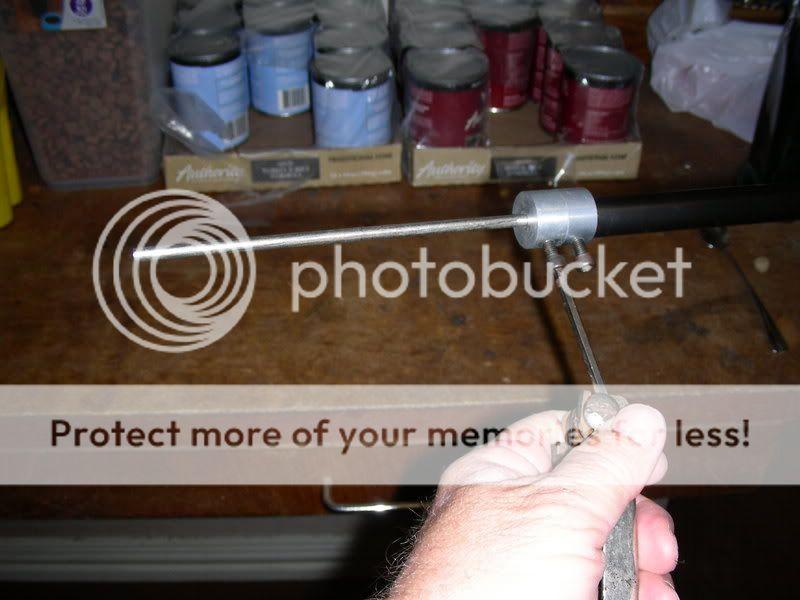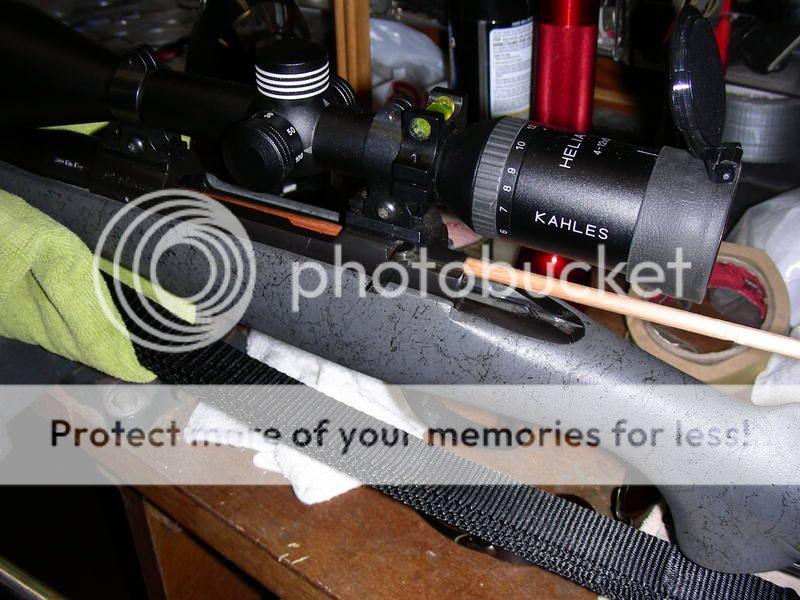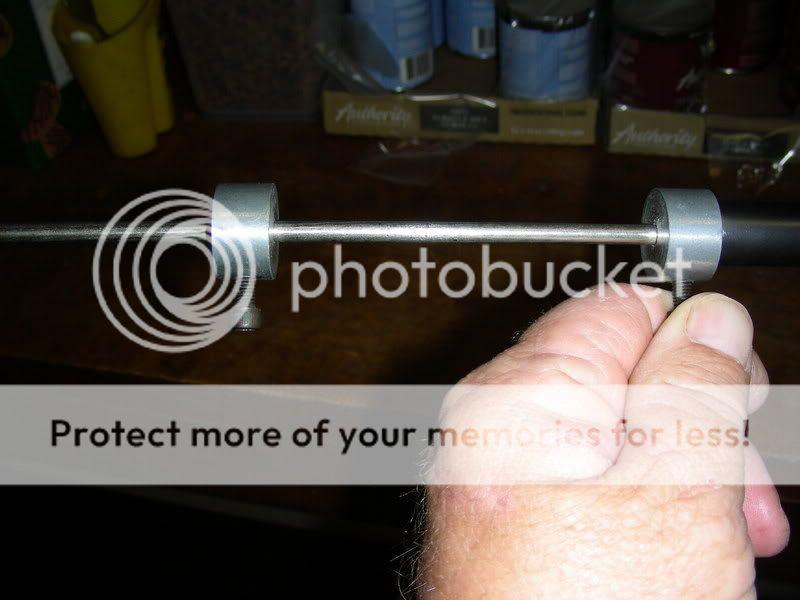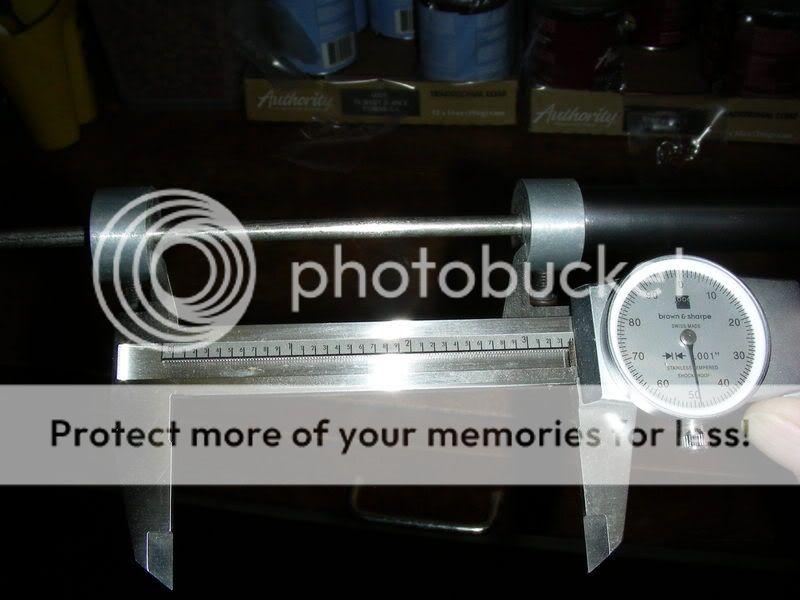Is there a tool out there to determine bullet seating depth? I always hear guys say just off the lands or touching the lands or .02 off the lands. My question is how do you get the chamber dimensions to know if your .02 off the lands? I think its called the ogive of the bullet (where it comes into contact with the lands) that determines the over all length but not sure how to get the measurement of the ogive accurately. I assume there are tools to do all this but not sure. any help??????
You are using an out of date browser. It may not display this or other websites correctly.
You should upgrade or use an alternative browser.
You should upgrade or use an alternative browser.
how do you find seating depth??
- Thread starter chad44
- Start date
 Help Support Long Range Hunting Forum
Help Support Long Range Hunting Forum
AJ Peacock
Well-Known Member
Is there a tool out there to determine bullet seating depth? I always hear guys say just off the lands or touching the lands or .02 off the lands. My question is how do you get the chamber dimensions to know if your .02 off the lands? I think its called the ogive of the bullet (where it comes into contact with the lands) that determines the over all length but not sure how to get the measurement of the ogive accurately. I assume there are tools to do all this but not sure. any help??????
There are several fancy ways. I typically use the shade tree mechanic method
1) Get a fired case that will chamber in your rifle.
2) Bend a small dent in the mouth of the neck, so the case will hold a bullet.
3) Blacken the bullet with a sharpie marker.
4) Start the bullet in the case and carefully chamber it.
5) remove the case and the bullet might stay in the barrel.
6) The small dent you made in the case will have scratched the sharpie marker down to its farthest point. That depth is where the bullet is touching (or into the lands .010" or so). Write it down.
Now reload a cartridge (can be a dummy if you want) and make it about .015 shorter than the number you got in #6 above. before you chamber it, blacken it with a candle. Candle black will wipe off at the lightest touch, so when you carefully chamber it, you will see if you touch the lands at all. If you don't touch, then you can make it a little longer, blacken it again etc etc. Until you have a depth that you feel is just touching the lands. Write it down.
There are a number of tools for measuring the ogive, I like the Hornady tool that attaches to you calipers.
The distance to the lands will grow as you shoot and erode the throat of your rifle.
Anyway, That should give you an idea of how it can be done with very few tools. It takes an hour or so to get a measurement you can trust, but it's not that bad.
Here is the tool I use to measure base to ogive length.
Lock-N-Load Bullet Comparator Basic Set 6 Inserts
AJ
AJ Peacock
Well-Known Member
thanks AJ, I get what youre saying except the dent in the case. not sure where the dent is and how you put it there??
I just use my thumb nail, just a small dent in the mouth of the case that will hold the bullet from falling into the fired case.
AJ
LouBoyd
Well-Known Member
Another method only requires a standard caliper (vernier, dial, or digital). It requires that the firearm has an action which has access from the rear and a place to measure from the barrel extension face on an AR or the rear end of the barrel on a Rem 700, some actions don't have a suitable place to measure from, or may require a caliper longer than 6" to make the rear of the action the reference.
1. Remove the bolt and make sure the chamber is clear.
2. make sure the action has a place where you set the end of the micrometer against the open end of the chamber so the depth gauge can reach into the chamber. Call this the action reference. In all cases the slide of the caliper should be parallel with the rifle bore.
3. Drop the bullet in question into the chamber gently so the bullet is sitting on the lands. Measure from the action reference to the base of the bullet. This is "base_depth"
4. remove the bullet and drop an empty case (preferably fired in that action) into the chamber. Measure from the same action reference to the case head (not into the primer hole). This is "head_depth".
5. Measure the bullet length from the base to the meplat (using the caliper jaws). This is "bullet_length"
6. calculate bullet_length+base_depth-head_depth = cartridge_overall_length
7. A cartridge loaded to with an overall length as calculated in step 5 will have the bullet touching the lands when chambered.
I'm not claiming this method is as precise as some of the specialized tools, but it is handy for determining if a particular bullet will work in with a firearm's magazine length and throat depth. It also gives a place to start for working up loads.
1. Remove the bolt and make sure the chamber is clear.
2. make sure the action has a place where you set the end of the micrometer against the open end of the chamber so the depth gauge can reach into the chamber. Call this the action reference. In all cases the slide of the caliper should be parallel with the rifle bore.
3. Drop the bullet in question into the chamber gently so the bullet is sitting on the lands. Measure from the action reference to the base of the bullet. This is "base_depth"
4. remove the bullet and drop an empty case (preferably fired in that action) into the chamber. Measure from the same action reference to the case head (not into the primer hole). This is "head_depth".
5. Measure the bullet length from the base to the meplat (using the caliper jaws). This is "bullet_length"
6. calculate bullet_length+base_depth-head_depth = cartridge_overall_length
7. A cartridge loaded to with an overall length as calculated in step 5 will have the bullet touching the lands when chambered.
I'm not claiming this method is as precise as some of the specialized tools, but it is handy for determining if a particular bullet will work in with a firearm's magazine length and throat depth. It also gives a place to start for working up loads.
Remember also that is only necessary IF you are running single shot. If you have a magazine, simply start at max magazine COAL and work from there.
Good articles also on Sinclair internantion reloading website.
BH
Good articles also on Sinclair internantion reloading website.
BH
rscott5028
Well-Known Member
As mentioned, Hornady, Sinclair, and others make tools.
Lock-N-Load Overall Length Gage Bolt Action
Lock-N-Load Bullet Comparator Basic Set 6 Inserts
The main advantage of the tools over the shade tree mechanic methods listed is arguably convenience.
All of the methods have flaws that subject them to innaccuracy. But, you don't have to measure accurately. You just need to find a relative starting point, and then be consistent/methodical as you do your load development.
Controlling neck tension is one of the most important aspects to consistent seating.
The best load is the one with the smallest groups and tightest MV. ...not the one with the most precisely measured OAL.
-- richard
Lock-N-Load Overall Length Gage Bolt Action
Lock-N-Load Bullet Comparator Basic Set 6 Inserts
The main advantage of the tools over the shade tree mechanic methods listed is arguably convenience.
All of the methods have flaws that subject them to innaccuracy. But, you don't have to measure accurately. You just need to find a relative starting point, and then be consistent/methodical as you do your load development.
Controlling neck tension is one of the most important aspects to consistent seating.
The best load is the one with the smallest groups and tightest MV. ...not the one with the most precisely measured OAL.
-- richard
brentc
Well-Known Member
- Joined
- Apr 3, 2009
- Messages
- 2,635
I simply start with a prepped sized unprimed case. Start a bullet and chamber into my mauser action. If I can't close the bolt, I seat bullet a bit deeper, until I can. When bolt closes easily, bullet is properly seated, for that rifle.
This is my favorite method. However, I always pull the firing pin so that the bolt rides freely without cocking the action. With a resized case, the bolt should ride freely in the action while opening and closing the bolt without the firing pin. If the bullet is in the lands at all, there will be resistance.
I start with a resized case with a bullet seated to where I know it's too long. You'll know it's too long because the bolt won't close. Then, I incrementally seat the bullet deeper by .005 until the bolt nearly closes.
Once I get the bolt nearly closed I tighten to .001 increments until the bolt closes freely. I then open the bolt to feel for any resistance when reopening the bolt. (usually happens with a "pop" right at the top of the bolt stroke) If it has resistance I will seat the bullet in .001 increments until the resistance is completely gone. I will sometimes go through this process multiple times to ensure I'm comfortable with the measurement.
When you have it seated perfectly there should be no resistance anywhere in the bolt manipulation process. Once you do it a couple times, it becomes really easy.
Make sure you measure with a comparator or some sort of device to measure the length from the case head to the bullet ogive to get the most precise measurement. COAL is fine if you have to fit your rounds in a magazine, but if you want to tune your seating depth to the lands you need to know the ogive length from the case head. Bullet tips from every manufacturer have variance that will throw off your COAL measurement.
Reloader222
Well-Known Member
Go to the following website for nice idea about how to determine AOL:
Innovative Technologies - Reloading Equipment
Click on Reloading and Shooting Tips and go to the appropiate item.

Innovative Technologies - Reloading Equipment
Click on Reloading and Shooting Tips and go to the appropiate item.

woods
Well-Known Member
There is a tool that will measure the jump for ALL your calibers and costs $25.00. It is from R-P Products called the C.O.L. E-Z Check. Made by an entrepreneur named Randy Reeves [email protected] , phone number 318-424-7867
It is a stainless steel rod with a removable brass tip and 2 lockable collets shown here with the Hornady OAL tool

You insert the tool down to the bolt face (make sure the firing pin is retracted) and lock the outermost collet

insert the bullet to the lands and hold there with a dowel (or the Hornady OAL tool if you have one)

insert the tool back down the muzzle to the bullet tip and lock the innermost collet

measure between the collets

Don't have to worry about the headspace on the modified cases and extremely accurate. The only variance comes with how hard you push on the bullet base and if you imbed it into the lands.
It is a stainless steel rod with a removable brass tip and 2 lockable collets shown here with the Hornady OAL tool

You insert the tool down to the bolt face (make sure the firing pin is retracted) and lock the outermost collet

insert the bullet to the lands and hold there with a dowel (or the Hornady OAL tool if you have one)

insert the tool back down the muzzle to the bullet tip and lock the innermost collet

measure between the collets

Don't have to worry about the headspace on the modified cases and extremely accurate. The only variance comes with how hard you push on the bullet base and if you imbed it into the lands.
Trikstr
Well-Known Member
I take a resized case and split the neck with a cutoff disk in my dremel tool like the picture above. Although I had a hard time doing it to one of my brand Lapua 338's(cost).
338 LEGEND
Well-Known Member
- Joined
- Jan 1, 2009
- Messages
- 196